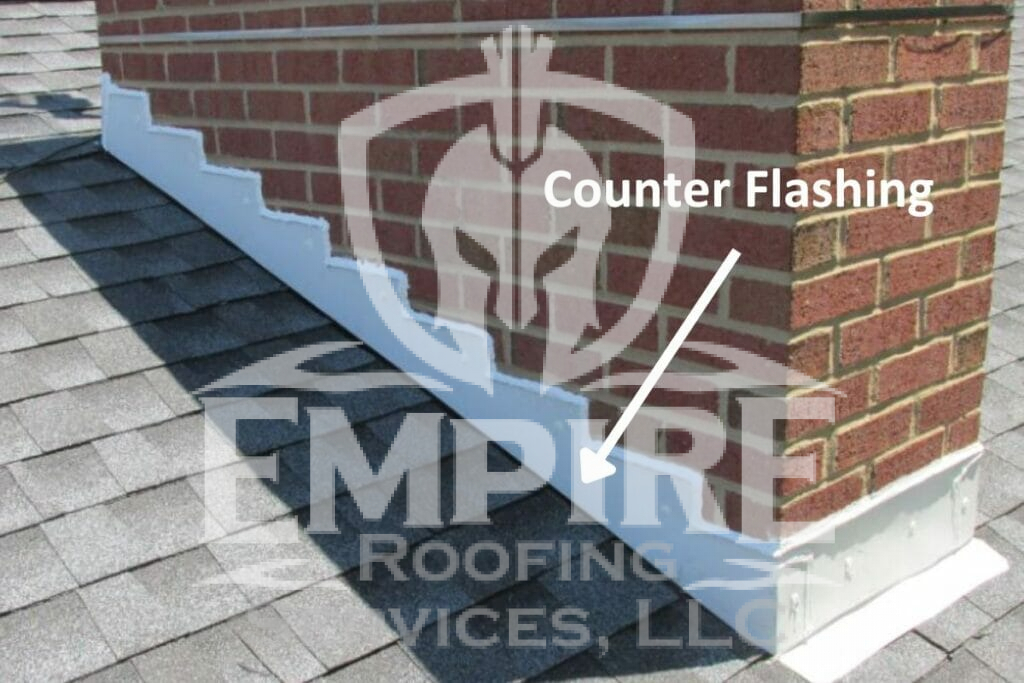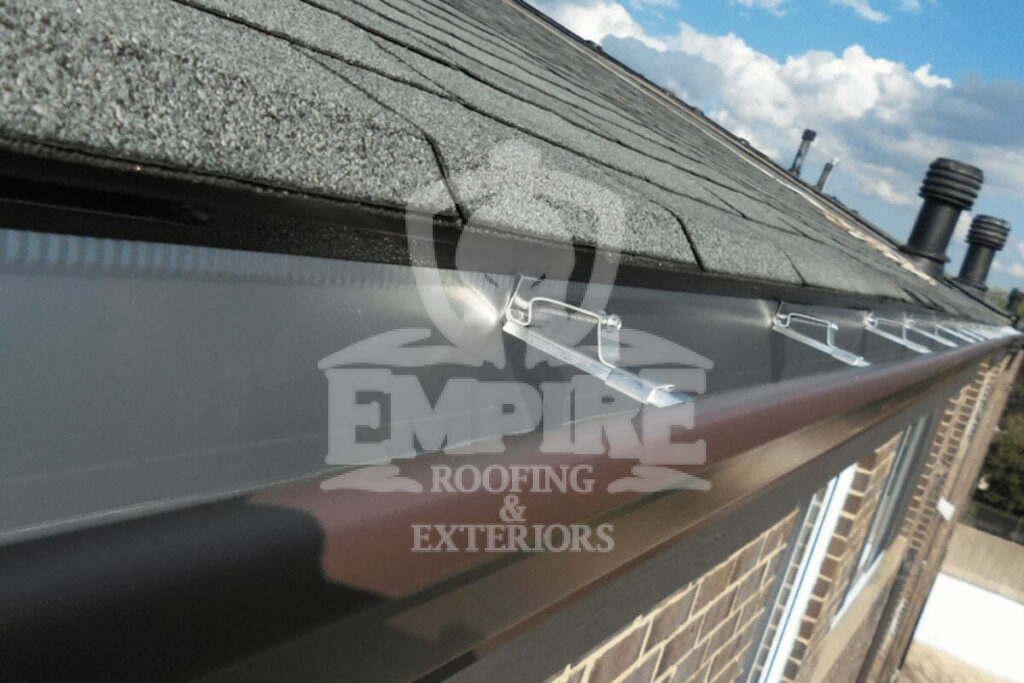Your roof is your home’s first line of defense against severe weather, rain, and debris. But even the strongest roofs can face problems if they’re not adequately maintained. This is where roof flashing comes in.
Often overlooked and forgotten about, flashing plays a crucial role in keeping your home free from water damage. In this guide, we will walk you through different types of flashing and their roles, so you can better understand how to protect your home from leaks and water damage.
What Is Roof Flashing?
Roof flashing is an important component that helps prevent water infiltration around areas where the roof intersects with another surface or material. It is typically made of metal or plastic and provides a watertight seal at these intersections.
Common areas where roof flashing is installed include:
- Around chimneys
- In valleys where two roof planes meet
- Along the edges where the roof meets a wall or dormer
- Around vent pipes and other roof penetrations
Proper installation of roof flashing is essential for maintaining a watertight roof system. Flashing is designed to direct water away from vulnerable areas and protect the underlying roofing materials and structure from moisture damage.
While roof flashing plays a vital role, it’s just one part of a complete roofing system. To fully understand how your roof protects your home, explore our blog post about How Different Parts Of A Roof Work Together.
Types of Roof Flashing & Their Function
Now, let’s explore the various types of flashing that play distinct roles in safeguarding your roof’s integrity and your home’s well-being. Each type has its unique purpose and is meticulously designed to tackle specific challenges.
1. Step Flashing

Think of step flashing as the guardian of your roof’s edges. It’s your shield against water infiltration where your roof meets a vertical surface, like a wall. Each step flashing piece is shaped like an L and is intertwined with your roofing material. As shingles ascend the vertical surface, step flashing follows suit, creating a staircase of protection that guides water harmlessly away.
- Intricately woven metal pieces blend with roofing material
- Diverts water effectively from roof-to-wall junctions
- Establishes a flawless and smooth water diversion route
2. Counter Flashing

Counter flashing often works together with a step or continuous flashing. Serving as a protective cap above these layers, it increases water resistance and bolsters the overall durability of your roof.
- Overlapping configuration complements step or continuous flashing
- Safeguards the upper edges of flashing layers.
- Enhances water resistance at critical junctures.
3. Chimney Flashing

A chimney is a beautiful addition to any home, but it can be easily damaged by rain or snow if it’s not properly sealed. Chimney flashing ensures that no water seeps in where the chimney protrudes from the roof, with step flashing and counter flashing working in tandem alongside it. Step flashing takes the lead, while counter flashing elegantly wraps around the chimney’s contours, effectively stopping any water intrusion.
- Essential for keeping water from dripping in around the chimney
- Safeguards against material weakening due to water infiltration
4. Vent Pipe Flashing

In an effort to safeguard your roof, vent pipe flashing takes center stage while upholding your plumbing system’s integrity. Available in various sizes and shapes, this flashing fits around the base of vent pipes on your roof. It creates a seal with meticulous precision, halting rainwater’s attempts to seep into your living space.
- Crafted with precision to snugly fit around the vent pipe’s base
- Creates a watertight seal, thwarting rainwater intrusion through pipe openings
- Adaptable in design, catering to various vent pipe sizes and shapes
5. Gutter Apron Flashing

Gutter apron flashing, a type of drip edge flashing, is a key player in roofing protection as it works directly with your gutter system. This discreet yet crucial element is installed above the gutters and beneath the first row of shingles, directing water runoff into the gutters and away from your foundation. By skillfully averting water intrusion, gutter apron flashing protects your home from structural damage.
- Positioned above gutters and beneath shingles to avert water intrusion
- Safeguards fascia boards from potential water damage
- Acts as a guardian for your foundation, channeling water away to prevent erosion
- It plays a pivotal role in maintaining the health of your roofing system health and its structural integrity
6. Dormer Flashing

Dormer flashing plays a crucial role in your roofing system, acting as a strong protector where your dormer and roof come together. Its main job is to form a barrier to stop any possible leaks or moisture from seeping in. Dormer flashing helps maintain the strength and stability of your home’s structure.
- Safeguards dormer-roof junctions, thwarting leaks and water seepage
- It uses a combination of flashing techniques, including step and counter flashing
- Preserves dormer structural longevity, effectively diverting water away from vulnerabilities
- Ensures seamless dormer integration, enhancing both aesthetics and functionality
7. Continuous Flashing

Continuous flashing is also often called base flashing. This singular metal strip is used along roof-wall transitions, standing as an impenetrable barrier against unwelcome water infiltration and potential damage.
- A continuous metal strip elegantly spans the length of a roof and wall junction
- Provides unwavering protection against water intrusion
- Acts as a waterproof shield guarding against moisture penetration
8. Skylight Flashing

Skylight flashing is perfectly fitted around your skylight. By skillfully combining step flashing, continuous flashing, and specialized kits, this method crafts a secure seal that bars moisture from seeping into the skylight frame.
- Comprehensive flashing technique tailored for skylights
- Uses many types of flashing
- Forms a waterproof barrier against leaks and moisture infiltration
9. Kickout Flashing

Kickout flashing, a subtle yet vital element of your roofing ensemble, is employed to redirect water away from vulnerable junctures. Installed where roof valleys and walls meet, kickout flashing steps in to divert the flow of water, ensuring it finds its way into the gutter system. This diversion not only safeguards your home against water-induced harm and potential rot, but also contributes to the overall longevity of your roofing structure.
- Skillfully reroutes water flow from corner valleys and walls
- Channels water effortlessly into the gutter system
- Safeguards against water damage and rot
Tips For Flashing Installation
With your newfound knowledge of the different roof flashing types, you can now take steps to protect your home and ensure a flawless installation. Before starting any projects, consider these expert tips:
1. Materials Matter
Choose flashing materials wisely, considering factors like durability, compatibility with roofing materials, and local weather conditions. Copper, aluminum, and galvanized steel are common choices, each with unique strengths.
2. Precise Installation
Proper installation is paramount. Whether step flashing or chimney flashing, ensure every piece is precisely placed and securely attached. A well-installed flashing system is crucial in preventing water infiltration.
3. Seamless Integration
Flashing should seamlessly integrate with your roofing design and materials. When done right, it’s like a hidden shield, protecting your home without stealing the spotlight from your roof’s aesthetics.
4. Regular Inspections
Schedule routine roof inspections to catch any flashing issues early. From loose flashing to worn-out seals, addressing minor concerns promptly can prevent significant leaks.
Also read: A HOMEOWNER’S GUIDE TO ROOF FLASHING REPAIR
Trust Your Roof With The Expert Roofers In Baton Rouge, LA
If you ever need assistance with quality roofing services or have questions about flashing, don’t hesitate to contact Empire Roofing & Exteriors. Just give us a call at (225) 347-8877. Our team is ready to help ensure your home remains a comfortable, secure haven by keeping your roof in top shape.
